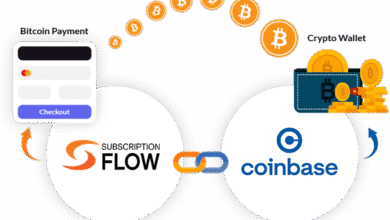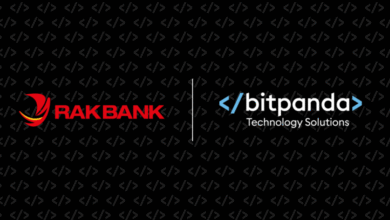Fed Rate Cut: Traders Anticipate Changes Amid Global Tensions

The prospect of a Fed rate cut is gaining traction as the Federal Reserve navigates the turbulent waters of global politics and economic uncertainty. Market expectations indicate a rising possibility of a quarter-point rate reduction this July, driven by the latest developments in geopolitical tensions, particularly America’s military actions in the Middle East. As the probability for a cut has surged to 15.5%, traders are closely monitoring shifts in interest rates and their implications for the broader economic forecast. This increased expectation reflects a growing sentiment that lower borrowing costs may be on the horizon, influencing both consumer spending and investment. In this dynamic environment, understanding the nuances of the Fed’s decision-making becomes essential for market participants and analysts alike.
The ongoing discussions around a potential reduction in the federal funds rate have sparked considerable interest within financial circles. As the Federal Reserve evaluates the economic landscape amidst rising geopolitical tensions, analysts are keenly observing alternative indicators of monetary policy shifts. Many are referring to this scenario as a ‘policy easing’ approach, considering the implications of lower interest rates on the economy. With a focus on market dynamics, stakeholders are attempting to gauge how recent events may alter the trajectory of interest rates, particularly in light of the anticipated July monetary policy meeting. Such considerations highlight the intricate relationship between global events and domestic financial decisions, reminding us that the landscape of economic strategy is constantly evolving.
Understanding the Implications of the Fed Rate Cut
The recent turbulence in global geopolitics has significant implications for the U.S. Federal Reserve’s monetary policy decisions. As tensions rise, particularly with events surrounding U.S. military actions, there is growing speculation about a potential Fed rate cut. This shift in expectations highlights how interconnected the global economy is with domestic policy-making. A quarter-point cut, anticipated by traders, could serve to stimulate economic activity and counterbalance any negative fallout from international conflicts, thereby making it a pivotal decision for Board members.
Market participants are keenly observing these developments, calculating the potential impact on borrowing costs and investment strategies. Should the Fed proceed with a rate cut, it could lower interest rates, encouraging consumer spending and business investments. However, the uncertainties surrounding military actions create a delicate balance; while a rate cut may bolster the economy, it could also lead to inflationary pressures if confidence wanes and investors retreat to safe-haven assets.
The Role of Market Expectations in Interest Rate Decisions
Market expectations surrounding interest rates play a crucial role in shaping economic forecasts. As traders interpret signals from the Federal Reserve and broader economic indicators, their outlook can significantly influence monetary policy outcomes. Presently, market forecasts suggest a notable increase in the likelihood of a Fed rate cut in July, as reflected in the CME Group’s Fedwatch tool. This rising probability—from 14.5% to 15.5%—indicates that investors are becoming more responsive to geopolitical events and their potential repercussions on U.S. monetary policy.
Furthermore, the anticipation of subsequent rate cuts, particularly in September and December, reveals how economic forecasts can adapt over time. While the Fed remains committed to its dual mandate of stable prices and maximum employment, external factors, such as military engagements, compel them to navigate complex market expectations. Traders closely monitor these developments, adjusting their strategies based on evolving assessments of the Fed’s likely moves amid shifting economic landscapes.
Geopolitical Factors Influencing Fed Rate Cuts
Geopolitical events often create ripples in the economic landscape, compelling financial markets to adjust their predictions for policy changes. The escalation of tensions between the U.S. and Iran has prompted traders to reconsider their forecasts regarding a Fed rate cut. Factors such as military actions can disrupt global trade, increase oil prices, and lead to uncertainty in financial markets, all of which feed into the broader economic picture affecting the Federal Reserve’s decision-making process.
The interplay between international relations and domestic monetary policy showcases the complex dynamics of today’s economy. For instance, should geopolitical tensions lead to increased uncertainty in consumer behavior or investment climates, the Fed may act preemptively by cutting rates to stabilize the economy. This underscores the importance for market participants to stay informed about these issues, as they not only influence immediate trading decisions but also longer-term economic strategy.
Exploring Futures Market Predictions for Rate Adjustments
The futures market is a vital tool for gauging traders’ sentiments towards potential Fed rate cuts. Platforms like Polymarket provide insights into collective expectations, with a current emphasis on the July quarter-point cut. The stark contrast between a 13% chance of a cut versus an 87% chance of rates remaining unchanged highlights the uncertainty that permeates the market. Traders are left analyzing various economic indicators and geopolitical developments to better position themselves amid the fluctuations.
Understanding futures market predictions not only illuminates trader psychology but also prepares investors for potential shifts in monetary policy. The significant probability of a Federal Reserve rate cut in July, coupled with market expectations for September and December, signals ongoing volatility in the financial landscape. Savvy investors are leveraging this information to adapt their strategies, recognizing that global events can have swift and profound impacts on domestic economic policies.
Rate Cut Prospects Ahead of July Fed Meeting
As we approach the July Fed meeting, speculations surrounding the potential for a rate cut are becoming increasingly pronounced. Trader sentiment is influenced heavily by current geopolitical events, notably the U.S. military engagement with Iran. These circumstances have led to a notable uptick in the probability that the Federal Reserve will opt to lower interest rates, particularly as economic indicators hint at slowing growth. This makes July an important month for economic observers and market participants alike.
The Federal Reserve’s decisions are often characterized by a data-driven approach; however, current external factors are compelling policy-makers to consider immediate cuts as a means of delivering economic support. Investors will be watching closely to see if the Fed acknowledges the increasing market expectations for a rate cut as they prepare for the discussions of their next policy shifts.
Anticipating the Economic Forecast in Light of Fed Rate Cuts
Economic forecasts serve as the framework from which traders can predict the potential impact of Federal Reserve decisions on interests rates. The anticipation surrounding a quarter-point cut reflects a shift in investor confidence as data trends indicate possible economic slowing. These forecasts are not only influenced by market sentiment but heavily informed by geopolitical tensions that could affect overall economic stability.
As expectations evolve, predicting the Fed’s next moves requires a nuanced understanding of both domestic and international developments. Traders must remain agile, reassessing their strategies in response to fading indicators and global tensions. This adaptability is essential as forecasts might dramatically shift based on unexpected geopolitical developments or changes in the U.S. economic landscape.
How Inflationary Pressures Affect Rate Cut Decisions
Inflationary pressures remain a key concern for the Federal Reserve, particularly in discussions surrounding the likelihood of a rate cut. While rate decreases may be designed to stimulate economic growth, they must be balanced against the potential for rising inflation resulting from excessive stimulus in responding to geopolitical risks. Traders are increasingly focusing on how the Fed balances these objectives in their upcoming meetings.
If the Fed chooses to cut rates amid rising inflation, it could signal a shift towards prioritizing growth over price stability, initiating debates among economists and market analysts. Thus, the Fed’s handling of these inflationary dynamics will be critical in shaping market expectations, particularly as they relate to predictions for future rate cuts.
Impact of Military Strategy on Economic Policy
The influence of military strategy on economic policy is stark, particularly when considering Fed rate cuts. As the U.S. engages in military operations, such as recent strikes in Iran, there arise concerns about how these decisions could reshape interest rate strategies. Financial markets are highly sensitive to geopolitical conflicts, as they can cause fluctuations in oil prices, investor sentiment, and overall economic stability, all of which the Fed must consider.
Market participants understand that significant military actions may compel the Fed to respond preemptively by adjusting interest rates. A proactive rate cut could alleviate economic pressures stemming from increased uncertainty and market volatility. Therefore, as traders evaluate military strategies, they are simultaneously recalibrating their expectations of how they will influence Federal Reserve policy in the near future.
The Connection Between Federal Reserve Decisions and Investor Behavior
The relationship between Federal Reserve decisions and investor behavior is a critical component of the financial marketplace. Investors are acutely aware that changes in interest rates can directly impact their portfolios, influencing everything from stock market performance to bond yields. As the anticipation around a July rate cut intensifies, traders adjust their positions based on expectations of how much cuts could potentially stimulate economic growth.
This connection highlights the importance of transparent communication from the Fed regarding monetary policy. Clarity in signaling future decisions helps investors navigate market fluctuations, particularly in uncertain times marked by military conflict and economic instability. As such, the Fed’s ability to accurately gauge market sentiment can be a determining factor in its overall effectiveness in managing economic growth.
Frequently Asked Questions
What is the current probability of a Fed rate cut in July?
As of recent measurements, the probability of a quarter-point Fed rate cut in July has increased to 15.5%, according to the CME Group’s Fedwatch tool. This marks a rise from previous estimations of 14.5% following the latest Federal Open Market Committee (FOMC) meeting.
How do geopolitical tensions influence interest rate decisions by the Fed?
Geopolitical tensions, such as the recent U.S. military actions, can significantly influence interest rate decisions by the Federal Reserve. Increased global conflict often heightens market uncertainty, which may prompt the Fed to consider cuts in interest rates to cushion the economic impact.
What factors are currently affecting market expectations for the Fed rate cut?
Market expectations for a Fed rate cut are influenced by several factors, including recent U.S. military actions, changing economic forecasts, and market sentiment regarding the Federal Reserve’s strategy. Currently, expectations have adjusted with the increased probability of a July rate cut amid rising geopolitical tensions.
How likely is it that the Fed will maintain current interest rates in the coming months?
Currently, there is an 84.5% likelihood that the Federal Reserve will maintain its current interest rates. However, as we approach the July FOMC meeting, the possibility of a rate cut is gaining traction.
What do current market predictions indicate for Federal Reserve rate cuts in September?
Looking ahead to the September FOMC meeting, markets estimate a 57.6% chance that the Fed will implement a 25-basis-point rate cut. This reflects the evolving expectations shaped by ongoing economic and geopolitical developments.
What is the significance of basis points in discussing the Fed rate cut?
Basis points are a standard unit of measure for interest rates and are crucial when discussing Fed rate cuts. A quarter-point cut refers to a reduction of 25 basis points in the federal funds rate, which can have significant implications for borrowing costs and economic activity.
What are futures indicating about the December Fed rate cut expectations?
Futures currently indicate only a 4.2% chance that the federal funds rate will remain within its existing range of 425-450 basis points by December, suggesting that market participants are leaning towards an anticipated adjustment in the rate.
How does the Federal Reserve’s rate cut impact everyday consumers?
A Fed rate cut typically leads to lower borrowing costs for consumers. This can result in reduced interest rates for mortgages, credit cards, and loans, making it cheaper for individuals to borrow money and potentially stimulating consumer spending.
| Key Points |
|---|
| Market expects Fed rate cut in July, probability now at 15.5% after recent geopolitical tensions. |
| Probability of no change in rates remains high at 84.5%, post FOMC meeting. |
| Increased chance of a rate cut for September FOMC meeting at 57.6%; half-point cut probability at 12.3%. |
| December forecasts suggest a 4.2% chance of rates staying the same, 22.8% probability of a shift to 400-425 basis points. |
| Geopolitical tensions impacting market sentiment and Fed rate expectations significantly. |
Summary
The Fed rate cut is gaining attention as market participants adjust their expectations amidst rising geopolitical tensions. With the likelihood of a quarter-point rate cut increasing to 15.5%, analysts are closely monitoring how conflicts such as the one between Israel and Iran may influence U.S. monetary policy. As rates are projected to remain high for the foreseeable future, it remains critical for traders to stay alert to how these dynamics could shift in the coming months.




